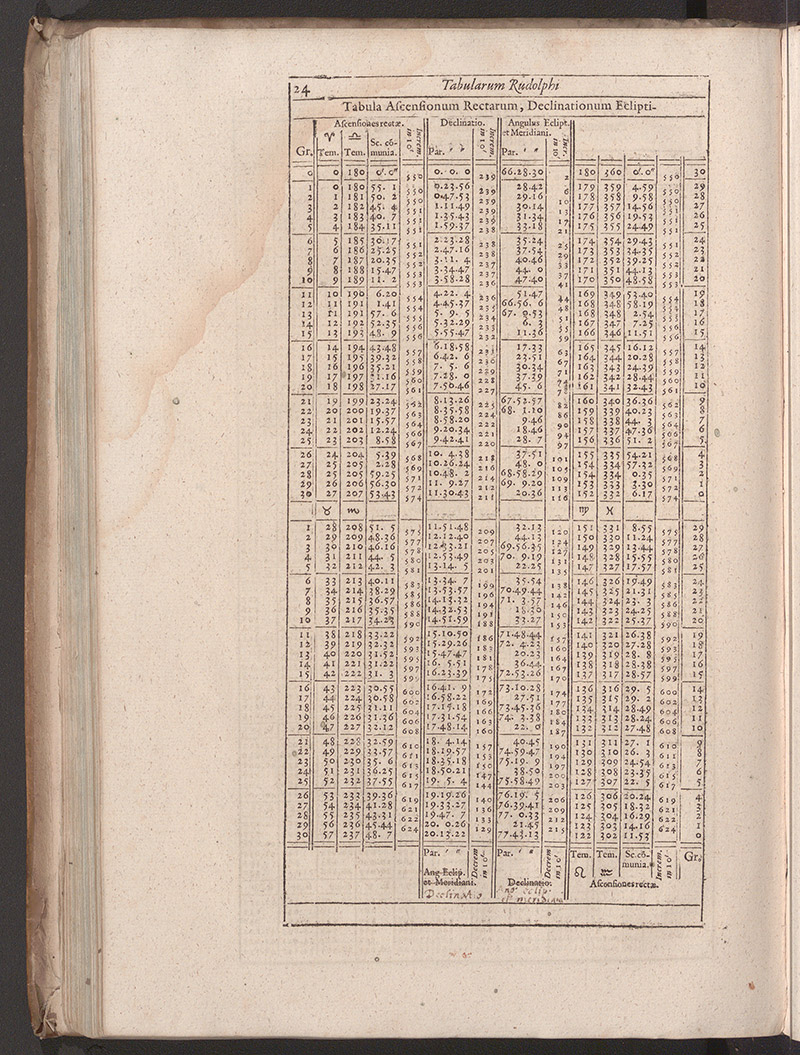The Rudolphine Tables

- Page 24.
- Tycho Brahe (1546-1601) & Johannes Kepler (1571-1630).
- Tabulae Rudolphinae, quibus astronomicae scientiae, temporum longinquitate collapsae restauratio continetur; a phenice illo astronomorum Tychone,... adque causarum et calculi perennis formula traduxit Ioannes Keplerus,...
- Ulm: Jonas Saur, 1627-[30]
Tycho Brahe could not complete his astronomical tables for the Emperor Rudolph II. Following Brahe’s death in 1601, the task of finishing these tables was entrusted to Kepler, who, after signing a contract with Brahe’s heirs in 1604, obtained the privilege to access the astronomical data. Dedicated to Emperor Ferdinand II, the Rudolphine Tables were published at Ulm in 1627.
The great novelty of the Rudolphine Tables is that, instead of supplying the planetary positions for specific days, they allowed the user to make calculations of planetary positions for any particular time in the past or future. It also includes tables of logarithms, a list of the longitudes and latitudes of many cities, and a catalog of stars. Apart from the application of various logarithms, the calculation of the longitude of a planet at a given time was based on Kepler’s equation for the description of planetary orbits. In brief, departing from Brahe’s geocentric system, Kepler established tabulations derived from his adoption of the heliocentric cosmology along with the concept of elliptical planetary orbits.
Select Bibliography
- Gingerich, Owen. 1968. “A Study of Kepler’s Rudolphine Tables.” Actes du XI Congrés international d’histoire des sciences 3. Wrocław: Ossolineum: 31-36.
- Jardine, Nicholas, Elisabeth Leedham-Green, and Christopher Lewis. 2014. “Johann Baptist Hebenstreit’s Idyll on the Temple of Urania, the Frontispiece Image of Kepler’s Rudolphine Tables, Part 1: Context and Significance.” Journal for the History of Astronomy 45 (1): 1-19.